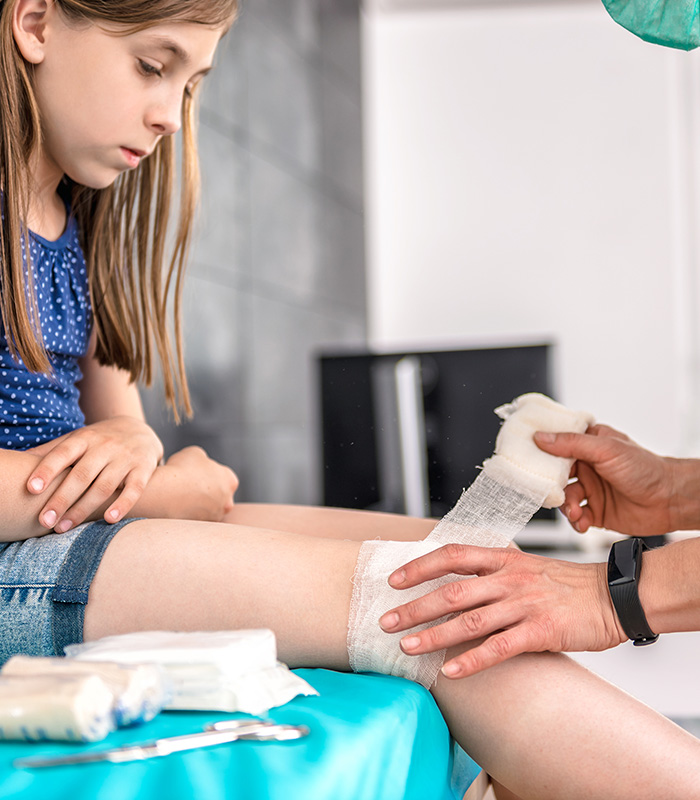
No matter how careful you or your kids may be, accidents and injuries are bound to happen. No one goes through life without suffering a few bruises, scrapes and cuts, but it goes without saying that some of these injuries are more serious than others.
This is especially true when confronted with a bloody cut. While the sight of streaming blood is always cause for concern, the initial appearance of the injury doesn't always indicate whether the wound requires stitches or will heal on its own. Here's a guide on how to tell if you or your child need stitches.
When a flesh wound occurs, the first step you should take is to get the injury under control. This means stopping the flow of blood and, if possible, cleaning the injury site to minimize infection. Use a soft washcloth to clean the wound and clear away blood, dirt and other debris. Remember that when caring for a wound, you should always pat to rinse, dress and clean a wound—rubbing the wound site will be painful to the victim, and it could exacerbate the injury. 1
"If you're caring for a child, remember to reassure them and to keep your own emotions in check. This will help the child stay calm and cooperative as you tend to the wound," says Dr. Heather Justice, Regional Medical Director for MultiCare Emergency. "You may want the child's help in using a pad to apply pressure to the wound while you gather supplies or handle other tasks."
As you care for the wound, take a look at the injury and try to gauge its severity. Some blood flow is okay, but large amounts of blood loss could become its own health hazard. Use a gauze pad or other absorbent material and apply pressure to the wound site to minimize blood loss and help the body stop the bleeding on its own.

In most cases, a stitches injury can be painful and even leave a lasting scar, but the severity of the injury is nothing that poses long-term implications. At the same time, serious cuts and injuries can quickly put the victim in harm's way. Use this guide to monitor any potential injury situation, and when in doubt, seek medical attention right away.

Once the initial bleeding is under control, you'll need to assess the severity of the injury to determine what action should be taken. Typically, if the bleeding stops within five to 10 minutes, the cut is likely minor and doesn't require stitches. But if bleeding continues beyond that point, and/or you're soaking through gauze and compression pads, it's likely that stitches or other care is needed.
You might also need to treat the wound with stitches if the wound is longer than one-half of an inch, if it's located on the face or near the eyes, if it's the result of a puncture wound, or if debris has penetrated inside the wound, requiring additional cleaning. Cuts that have ragged edges may need stitches so they heal with minimal scarring, and animal bites should always receive medical attention due to the risk of infection. 2
For most wounds that need stitches, you should be fine driving the injured person to the nearest urgent care clinic or emergency room. But severe injuries may be potentially life threatening. In these cases, you shouldn't hesitate to call 911 so paramedics can begin administering treatment right away.
"If bleeding is profuse, and/or if the wound if spurting blood3, immediate medical attention is needed to get the blood loss under control says Dr. Heather Justice, Regional Medical Director for MultiCare Emergency. "Additionally, if the injured party feels dizzy or has other abnormal symptoms that accompany the wound, call 911—this could be a sign that other, unseen complications have developed from the injury."